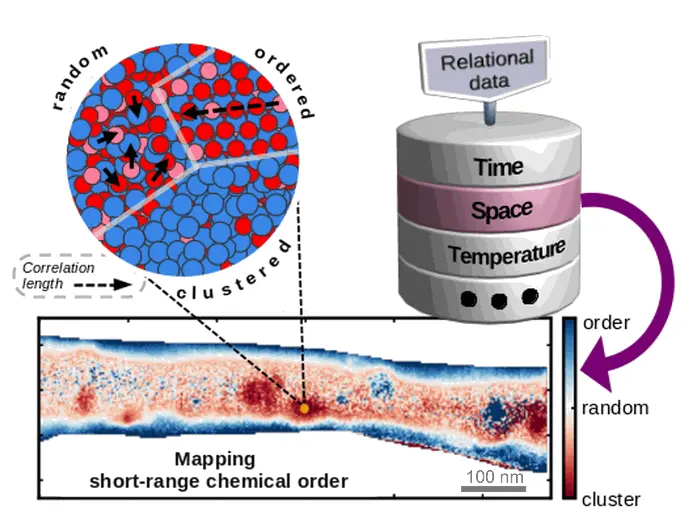Projects
Scanning Nano-Structure Electron Microscopy (SNEM)
Challenge:
In our lab we target structurally complex materials that often include high degrees of disorder, such as glasses, high-entropy alloys, and phase-change materials. While these materials are candidates for neuromorphic computation applications, and energy recycling, harvesting and storage applications, their high degree of disorder require a non-traditional approach to enable creating links between strucutre and functionality. Since all these materials, at their standard operation conditions, are out of equilibrium or dynamically changing during their functionalization, to guide their development and implementation, one must follow their structural evolution. Moreover, if one wishes to understand their microscopic structural distribution in detail, for example to implement them in a nano-device, their characterization must be done at the nano-scale.
Mission
:
Our goal is to develop and implement an experimental probe and analysis tools that can identify strucutral order evolution with a high enough structural, spatial and temporal resolution. By coupling probes that measure, for example, heat and charge transport, we hope to understand phase evolution mechanisms and the relation to, for example, transport and opto-electronic properties.
Following our pioneering work [1], by using relational datasets from transmission electron total-scattering experiments, we demonstrated that data-driven analysis are a key to identify, quantify and map basic building blocks of short- and medium-ranged strucutral motifs from complex structures. The experiment revealed that within a glass, which often referred as a uniform an continuous structure, strucutral fluctuations that span a few tens of manometers. This pioneering successful quantitative mapping of order in a glassy material at the nano-meter scale, showed us that we can, and should, learn about order fluctuations at the nano-scale.
With the help of the high resolution and versatility of Transmission Electron Microscopes (TEM's) today, and a machine-learning toolbox for data-driven analysis, we keep the development of Scanning Nano-structured Electron Microscope (SNEM) technique, which finally unlocks the potential to understand what happens at the nano-scale in disordered materials. This project focuses on the development and implementation of in-situ SNEM for material-science problems, and is part of a global effort to solve hard problems in materials science with data-science.
Related Publications:

